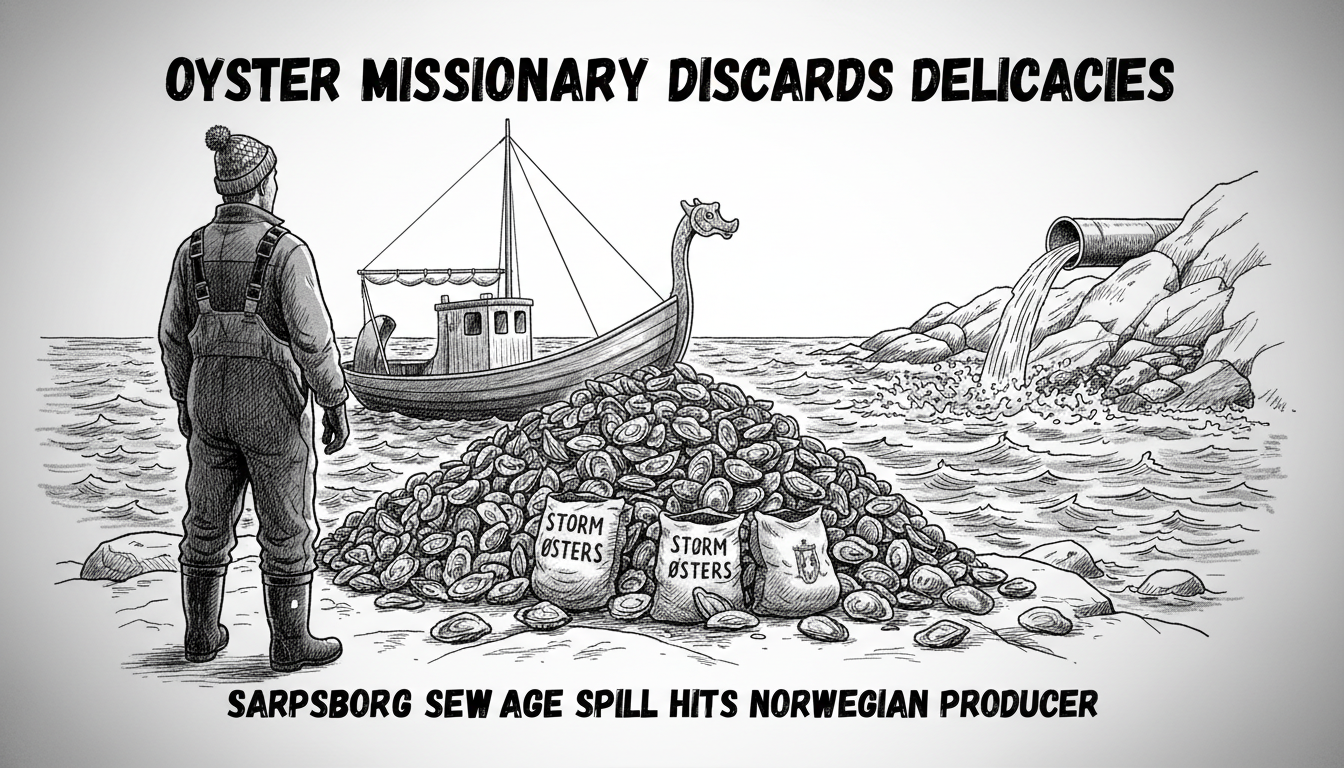On a remote beach in Hvaler, self-proclaimed oyster missionary Petter Bjørge holds a perfect Pacific oyster. This delicacy should be heading to restaurants. Instead, he must throw it away.
"This is a crisis for us," says Bjørge, manager of the small oyster company Storm Østers. He normally harvests delicacies from Ytre Hvaler National Park. This autumn, his company stopped all harvesting.
The shutdown began after Sarpsborg municipality received permission to release untreated sewage into the Glomma river. This occurred during construction of a new treatment plant.
"We chose to stop production for both food safety and reputation reasons," Bjørge explains.
What frustrates him most is the lack of warning. Neither Storm Østers nor the Norwegian Food Safety Authority received advance notice.
"The strange thing is that Sarpsborg municipality didn't inform us downstream operations. Neither Kostverket in Sweden nor Strömstad municipality heard anything either. When we contacted the Food Safety Authority, they didn't know about the discharge either," he states.
Bjørge believes the municipality has much to learn from this situation.
"I asked who would cover the costs. They didn't understand what I meant. We have zero income but still must pay for testing and analysis," he says.
Officials claim they provided advance notice about the temporary discharge through their website and local newspapers. They confirmed no compensation scheme exists for affected businesses.
The county governor granted permission in June following standard application procedures and public consultation.
Hvaler's mayor acknowledges protesting the decision while defending Sarpsborg's position.
"The current plant doesn't clean sewage well enough. The old facility releases bacteria from 65,000 residents directly into Glomma," she says. She hopes conditions will improve significantly afterward.
Paradoxically, water quality tests show better results than expected. Some samples even improved compared to pre-discharge conditions.
"The analyses actually look quite good. I believe we could eat oysters today. But we won't take chances when everything remains uncertain," Bjørge notes.
During an October inspection, authorities found Sarpsborg lacked documented environmental risk assessment. The municipality submitted documents shortly after, closing the compliance gap.
While oyster harvesting remains suspended, Storm Østers discovered a new revenue source: beach cleaning.
"Necessity teaches naked woman to spin," Bjørge smiles, referencing a Norwegian proverb about resourcefulness.
His team now clears Pacific oysters from popular swimming areas. In one day, they collected half a ton from a 50x50 meter section of Skårsnesbukta bay.
"It cuts my heart to discard them. These are fantastic oysters, the same type sold in France," he says.
Local property owner Lars-Reidar Huth watches from his cabin. "My grandchild got cut by shells this summer. It ruined the entire swimming season," he comments.
Bjørge looks toward the future. He plans to use unsellable oysters for new products.
"We're moving into circular economy. The meat can be used for protein production, and shells for lime," he explains.
Storm Østers collaborates with the Norwegian University of Life Sciences to develop chicken feed from oyster meat.
"We're getting a head start on the project. We need 15-20 tons to work with, so we're collecting everything," he says.
The sewage discharge should end by mid-December. New tests will follow.
"We hope to restart around New Year. The challenge is missing the crucial pre-Christmas sales period," Bjørge concludes.
Normally, oysters require four weeks of cleansing in flowing, filtered seawater before sale. Bjørge looks across the fjord where sunlight glitters on waves.
"It cuts my heart a little to throw them away," he says quietly.
The situation highlights how municipal infrastructure projects can create unintended consequences for small businesses, even when environmental testing suggests minimal actual risk.
